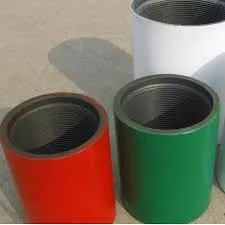- Afrikaans
- Albanian
- Amharic
- Arabic
- Armenian
- Azerbaijani
- Basque
- Belarusian
- Bengali
- Bosnian
- Bulgarian
- Catalan
- Cebuano
- Corsican
- Croatian
- Czech
- Danish
- Dutch
- English
- Esperanto
- Estonian
- Finnish
- French
- Frisian
- Galician
- Georgian
- German
- Greek
- Gujarati
- Haitian Creole
- hausa
- hawaiian
- Hebrew
- Hindi
- Miao
- Hungarian
- Icelandic
- igbo
- Indonesian
- irish
- Italian
- Japanese
- Javanese
- Kannada
- kazakh
- Khmer
- Rwandese
- Korean
- Kurdish
- Kyrgyz
- Lao
- Latin
- Latvian
- Lithuanian
- Luxembourgish
- Macedonian
- Malgashi
- Malay
- Malayalam
- Maltese
- Maori
- Marathi
- Mongolian
- Myanmar
- Nepali
- Norwegian
- Norwegian
- Occitan
- Pashto
- Persian
- Polish
- Portuguese
- Punjabi
- Romanian
- Russian
- Samoan
- Scottish Gaelic
- Serbian
- Sesotho
- Shona
- Sindhi
- Sinhala
- Slovak
- Slovenian
- Somali
- Spanish
- Sundanese
- Swahili
- Swedish
- Tagalog
- Tajik
- Tamil
- Tatar
- Telugu
- Thai
- Turkish
- Turkmen
- Ukrainian
- Urdu
- Uighur
- Uzbek
- Vietnamese
- Welsh
- Bantu
- Yiddish
- Yoruba
- Zulu
Understanding Casing Pup Joints in Oil and Gas Applications for Efficient Operations
Understanding Casing Pup Joints in Oil and Gas Operations
Casing pup joints play a crucial role in the oil and gas industry, specifically in the construction and integrity of wellbores. These short lengths of pipe are used to connect various components of the casing string, primarily to accommodate for spatial adjustments and to maintain the integrity of the overall well structure. Understanding casing pup joints is essential for industry professionals involved in drilling, completion, and production phases.
Casing itself is a series of pipes that are placed in the wellbore to stabilize the well and prevent it from collapsing. It also protects the groundwater from contamination. In operation, casing strings can encounter various challenges due to geological conditions or changes in drilling technology. This is where casing pup joints come into play. Their typical length ranges from 2 to 10 feet, making them flexible enough to allow for adjustments and settings within the casing string.
One of the primary functions of casing pup joints is to offset the length of the casing string
. When drilling teams find that a standard length of casing is too long for a particular section of the well, pup joints can be added to achieve the desired depth or to provide additional support. This can be particularly important in complex drilling scenarios where precision is paramount, and any miscalculation can lead to costly delays and safety hazards.Moreover, pup joints are commonly utilized in various applications, including tie-backs and extensions of existing casing strings. They can also serve as transition sections between different casing sizes or types, facilitating the smooth progression of operations. The ability to customize the length and configuration of the casing string using pup joints enhances operational efficiency and minimizes the risk of complications during drilling and production.
casing pup joint

In addition to their functional benefits, casing pup joints must meet rigorous industry standards. They are produced from material that is resistant to wear and corrosion, ensuring longevity and reliability even under extreme conditions. The most common materials used include carbon steel and various alloys, which help to maintain the structural integrity of the wellbore throughout its lifecycle.
Furthermore, the installation and connection of casing pup joints require technical expertise. The threading and coupling processes must be executed with precision to prevent leaks and ensure the overall safety of the well. Professionals in the industry are trained to handle these operations, utilizing specialized tools and techniques to achieve the best results.
The use of casing pup joints is not without its challenges, however. Each installation is unique, and unexpected geological formations can complicate the process. This reinforces the necessity for thorough geological assessments and precise engineering calculations prior to drilling activities. In addition, regular maintenance and inspection of the casing strings, including the pup joints, are essential to prevent failures that could lead to environmental hazards or loss of productivity.
In conclusion, casing pup joints are an indispensable part of casing operations, providing flexibility and ensuring the structural integrity of wells in the oil and gas industry. Their ability to adapt to various challenges makes them essential for successful drilling and completion. As the industry continues to evolve with advances in technology and practices, the importance of understanding and effectively utilizing these components will remain critical for ensuring operational success and safety.
-
Well Casing Extension Couplings – Applications and InstallationNewsJun.06,2025
-
Types of Crossover Subs in Drilling & CompletionNewsJun.06,2025
-
Key Features of High-Quality Tubing Pup JointsNewsJun.06,2025
-
Installation and Maintenance Tips for Steel Couplings for PipeNewsJun.06,2025
-
How to Select the Right Pup Joint for Oil & Gas OperationsNewsJun.06,2025
-
Applications of Stainless Steel Pipe CouplingsNewsJun.06,2025







